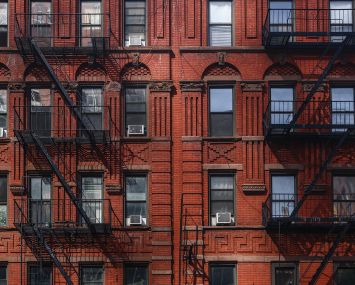It is said that as the Manhattan goes, so goes the entire New York City investment sales market. While that is not completely accurate, it is true that activity within Manhattan provides a foreshadowing of what will happen in other geographic submarkets. Whatever the trend is, it happens in Manhattan first.
This week we will take a look at the investment sales market’s performance in Manhattan (south of 96th Street on the East Side and south of 110th Street on the West Side) in 2016 and what it means for the broader market moving forward.
Prior to getting into the 2016 Manhattan statistics, a quick look at the broader market citywide shows us that last year there was $57.8 billion of investment sales activity, down 25 percent from the all-time record of $77.1 billion in 2015. The number of properties sold was 4,360 last year, down 16 percent from the 5,191 properties that sold in 2015 and 21 lower than the all-time record of 5,534 sales in 2014.
On a citywide basis, values achieved the new all-time record in 2016 with an average price per square foot of $534. This average was 9 percent higher than the $491 average seen in 2015.
Relatively, these numbers don’t look so good, but on an absolute basis, the dollar volume of sales last year was still tied for the third best year ever and the number of properties sold still represented an above average year for New York City.
In Manhattan last year, the numbers were weaker than the citywide numbers as the outer boroughs and northern Manhattan performed relatively well.
In 2016, there was $39.6 billion of investment sales activity in Manhattan, a 34 percent drop from the $59.9 billion that occurred in 2015. The number of properties sold in 2016 was 765, down 30 percent from the 1,089 properties sold in 2015 and down 25 percent from the 1,014 that sold in 2014. (The 2016 total was 36 percent below the 1,200 sales that occurred in 2012, which was an all-time record for Manhattan.)
The $59.9 billion of investment sales makes 2016 the fourth best year ever. However, this is a deceiving statistic because, as property values rise, it is natural that dollar volume levels will swell even if overall market activity is below average. The number of properties sold is much more indicative of market activity. While this metric was also muted in 2016, the 765 sales still represent 2.8 percent of the total stock of 27,649 properties in our Manhattan statistical sample. The 34-year average turnover ratio in Manhattan is 2.6 percent of the total stock. Therefore, last year’s total, while off significantly, was still 20 basis points higher than the long-term average.
With regard to property values in Manhattan, different opinions can be formed dependent upon which set of statistics are used. On an annual basis, the average price of all major property types ended the year at $1,450 per square foot, a 9 percent increase over the 2015 average of $1,332. On face value, this performance seems very strong. However, if we dig into the numbers a little more closely, we see some troubling trends.
By eliminating just 2 of the 765 sales from the data (two retail condominium sales in Soho on Spring Street, both of which occurred at over $17,000 per square foot) the performance of the market actually shows a 1 percent decrease in value in 2016 versus 2015. Of more concern, is the fact that on a quarter-over-quarter basis, the average price per square foot in Manhattan dropped throughout the year. As the year progressed, we saw reductions in value within the retail, office and mixed-use sectors. Multifamily properties performed best, remaining about flat. This is not surprising as apartment buildings are always the last product type to see values drop.
So, as we proceed deeper into 2017, it would appear that market conditions in Manhattan are trending downward and this trend has not yet impacted the outer boroughs. We expect volume of sales, both in terms of dollars and number of properties sold will be lower this year than last year and that property values are likely to decrease further or, at best, stay at current levels.
On the bright side, foreign capital continues to pour into the market and changes to tax policy could tangibly impact the performance of the market for the better. It will be interesting to see how these dynamics play out through 2017 and beyond.


